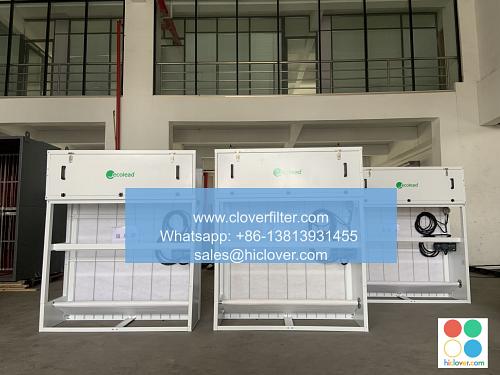Artificial Intelligence in Air Filter Design and Optimization

The integration of Artificial Intelligence (AI) and Machine Learning (ML) in air filter design and optimization has transformed the way we approach air purification. By leveraging Data-Driven Insights and Predictive Modeling, AI-powered air filters can Maximize Efficiency, Minimize Energy Consumption, and Optimize Performance. In this article, we will explore the applications, benefits, and future directions of AI in air filter design and optimization.
Application Areas of AI in Air Filter Design
AI is being applied in various areas of air filter design, including:
* Aerodynamics and Fluid Dynamics: AI-powered simulations and modeling enable the optimization of air flow and pressure drop in air filters, resulting in Improved Air Quality and Reduced Energy Consumption.
* Filter Media Optimization: AI algorithms can analyze the properties of filter media and Predict their Performance under different operating conditions, allowing for Optimized Filter Design and Maximized Efficiency.
* Sensor Integration and Data Analysis: AI-powered sensors and data analytics enable real-time monitoring of air quality and filter performance, facilitating Predictive Maintenance and Optimized Filter Replacement.
AI-Powered Air Filter Optimization Techniques
Several AI-powered techniques are being used to optimize air filter design, including:
* Genetic Algorithms: These algorithms use Natural Selection and Genetic Variation to optimize filter design and Maximize Performance.
* Neural Networks: AI-powered neural networks can Predict Filter Performance and Optimize Filter Design based on Historical Data and Operating Conditions.
* Machine Learning: ML algorithms can Analyze Data from various sources and Predict Optimal Filter Design and Operating Conditions for Maximum Efficiency and Minimum Energy Consumption.
Benefits of AI in Air Filter Design and Optimization
The integration of AI in air filter design and optimization offers several benefits, including:
* Improved Air Quality: AI-powered air filters can Maximize Efficiency and Minimize Pollutant Emissions, resulting in Healthier Indoor Air.
* Energy Efficiency: AI-optimized air filters can Reduce Energy Consumption and Minimize Operating Costs.
* Increased Filter Lifespan: AI-powered predictive maintenance and optimized filter replacement can Extend Filter Lifespan and Reduce Maintenance Costs.
Future Directions and Challenges
While AI has revolutionized air filter design and optimization, there are still several challenges and future directions to be explored, including:
* Integration with IoT and Smart Buildings: AI-powered air filters can be integrated with IoT Devices and Smart Building Systems to Optimize Air Quality and Energy Efficiency in real-time.
* Development of New Filter Media: AI can be used to Design and Optimize New Filter Media with Improved Performance and Increased Efficiency.
* Addressing Data Quality and Availability: High-quality data is essential for AI-powered air filter design and optimization. Data Quality and Availability must be addressed to ensure Accurate Predictions and Optimized Performance.
In conclusion, the integration of AI in air filter design and optimization has the potential to revolutionize the way we approach air purification. By leveraging Data-Driven Insights and Predictive Modeling, AI-powered air filters can Maximize Efficiency, Minimize Energy Consumption, and Optimize Performance. As the field continues to evolve, we can expect to see Increased Adoption of AI-powered air filters in various industries, from Commercial HVAC to Industrial Air Pollution Control. Prompt

